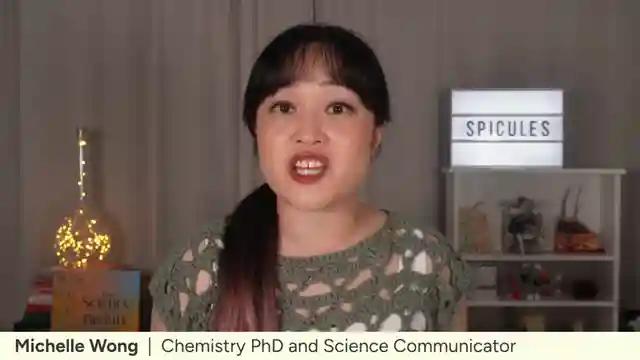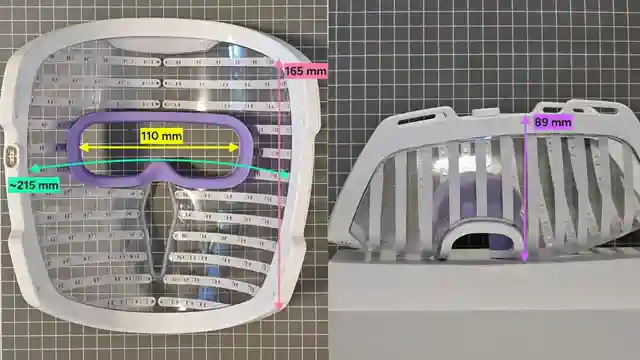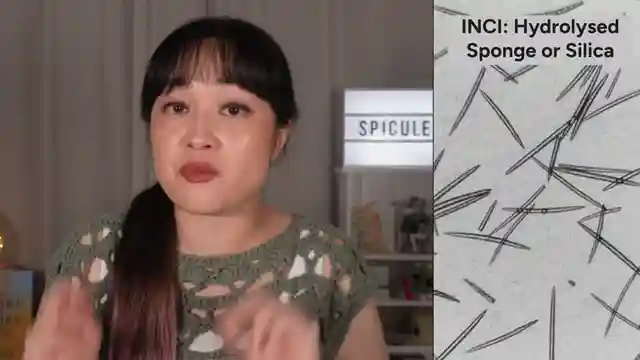Skincare Innovations: Red Light Masks, Spicules, and Vitamin C Updates

- Authors
- Published on
- Published on
In this thrilling episode of Lab Muffin Beauty Science, the brilliant Michelle delves into the world of skincare innovations with the intensity of a Formula 1 race. She dissects the red light mask by iRestore, showcasing its cutting-edge design with three wavelengths and 120 LEDs of each color. This mask isn't just your average Joe - it's a powerhouse for anti-aging and acne, providing superior light coverage and comfort that leaves the competition in the dust.
Next up, Michelle tackles the enigmatic realm of spicules, those micro needles that promise to revolutionize skincare. With the precision of a seasoned race car driver, she navigates the potential benefits and risks of these tiny wonders, shedding light on their ability to improve skin texture and pore size. Safety concerns loom like a hairpin turn, as the team explores the possibility of foreign body granulomas from silica spicules, contrasting it with promising studies on their decomposition.
As the skinceuticals CE ferulic patent lapses, Michelle revs up the engine on vitamin C formulas, highlighting the emergence of higher pH ascorbic acid formulations. Like a roaring engine on a straightaway, these new formulas aim to reduce skin irritation, challenging conventional beliefs about the effectiveness of low pH serums. The race for innovation in skincare accelerates, with companies like L'Oreal leading the pack in creating stable and affordable vitamin C products that promise to deliver results without the burn. Michelle's expertise shines through as she navigates the twists and turns of patent expiration, showcasing the dynamic landscape of skincare advancements.

Image copyright Youtube

Image copyright Youtube

Image copyright Youtube

Image copyright Youtube
Watch Innovative skincare: red light mask, Reedle Shot, vitamin C patent expiry (iRESTORE AD) on Youtube
Viewer Reactions for Innovative skincare: red light mask, Reedle Shot, vitamin C patent expiry (iRESTORE AD)
Viewer appreciates the professional approach to sponsorships
Concerns about fragrance in L'Oreal products
Interest in red light therapy and vitamin C serum content
Curiosity about the safety of spicules
Request for a comparison between different Vitamin C dispensers
Trust in the reviewer's recommendations
Interest in LED masks for skincare
Questions about potential skin damage from near infrared wavelengths
Issues with codes for product discounts
Inquiries about purchasing specific skincare products in certain regions
Related Articles

Top Viral Skincare Products Reviewed: Exfoliation, Makeup Removal, and Soothing Hydration
Lab Muffin Beauty Science reviews viral skincare products from Stylevana, featuring innovative ingredients like sponge spicules and fermented centella extract. Discover top picks for gentle exfoliation, effective makeup removal, and soothing hydration, all tested for safety and reliability.

Sunscreen Secrets: Harmful Ingredients, DIY Alternatives, and Sun Protection Tips
Lab Muffin Beauty Science exposes harmful sunscreen ingredients and advocates for DIY alternatives. Experts discuss the importance of lifestyle sun protection strategies and debunk myths about antioxidant supplements. They recommend mineral sunscreens with non-nano zinc oxide while providing evidence-backed options like tomatoes and leafy greens for enhanced sun protection.

Skincare Innovations: Red Light Masks, Spicules, and Vitamin C Updates
Lab Muffin Beauty Science explores skincare innovations like iRestore's red light mask, spicules in VT Reedle shot, and updates on vitamin C formulas. Discover the latest trends and safety considerations in skincare technology.

Unlocking Hair Protection: Receipt Experiment Reveals Product Efficacy
Lab Muffin Beauty Science tests heat protectants on receipts to determine effectiveness. Water, alcohol, and surfactants impact color changes, revealing insights into product efficacy for hair health.
